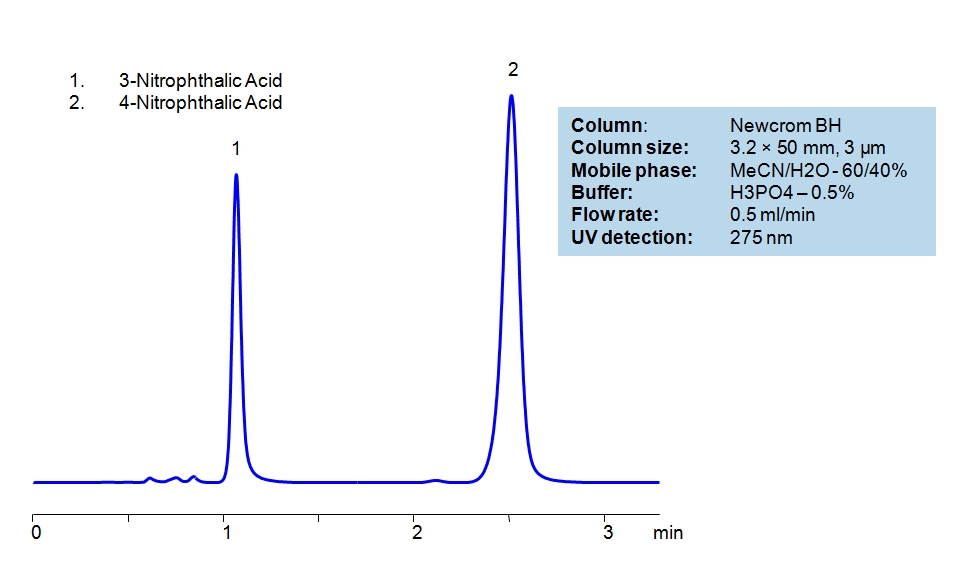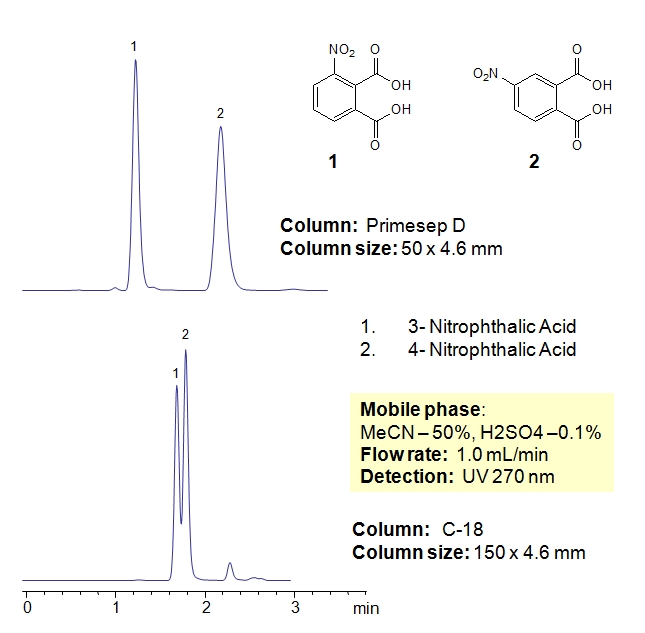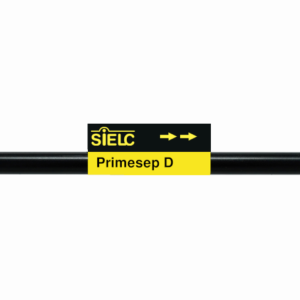| Column | Newcrom BH, 3.2×50 mm, 3 µm, 100A |
| Mobile Phase | MeCN/H2O – 60/40% |
| Buffer | H3PO4 – 0.5% |
| Flow Rate | 0.5 ml/min |
| Detection | UV 275nm |
| Class of Compounds | Acid |
| Analyzing Compounds | 3-Nitrophthalic and 4-Nitrophthalic Acids |
Nitrophthalic acid exist in the form of two isomers: 3-nitrophthalic and 4-nitrophthalic acid. Both forms have similar hydrophobicity and ionic properties. Isomers of nitrophthalic acid are separated on Primesep D column by combination of reverse phase and anion-exchange mechanisms. Method developed on a short-50 mm- column and allows fast analysis of these two isomers.
Application Column
Newcrom B
The Newcrom columns are a family of reverse-phase-based columns. Newcrom A, AH, B, and BH are all mixed-mode columns with either positive or negative ion-pairing groups attached to either short (25 Å) or long (100 Å) ligand chains. Newcrom R1 is a special reverse-phase column with low silanol activity.
Select optionsNewcrom BH
The Newcrom columns are a family of reverse-phase-based columns. Newcrom A, AH, B, and BH are all mixed-mode columns with either positive or negative ion-pairing groups attached to either short (25 Å) or long (100 Å) ligand chains. Newcrom R1 is a special reverse-phase column with low silanol activity.
Select optionsPrimesep D
The Primesep family of mixed-mode columns offers a wide variety of stationary phases, boasting unprecedented selectivity in the separation of a broad array of chemical compounds across multiple applications. Corresponding Primesep guard columns, available with all stationary phases, do not require holders. SIELC provides a method development service available to all customers. Inquire about our specially-tailored custom LC-phases for specific separations.
Select options4-Nitrophthalic Acid









